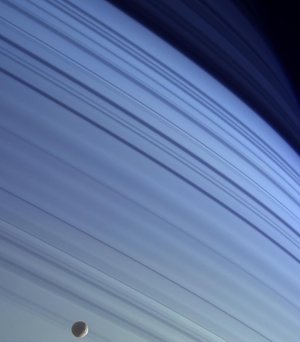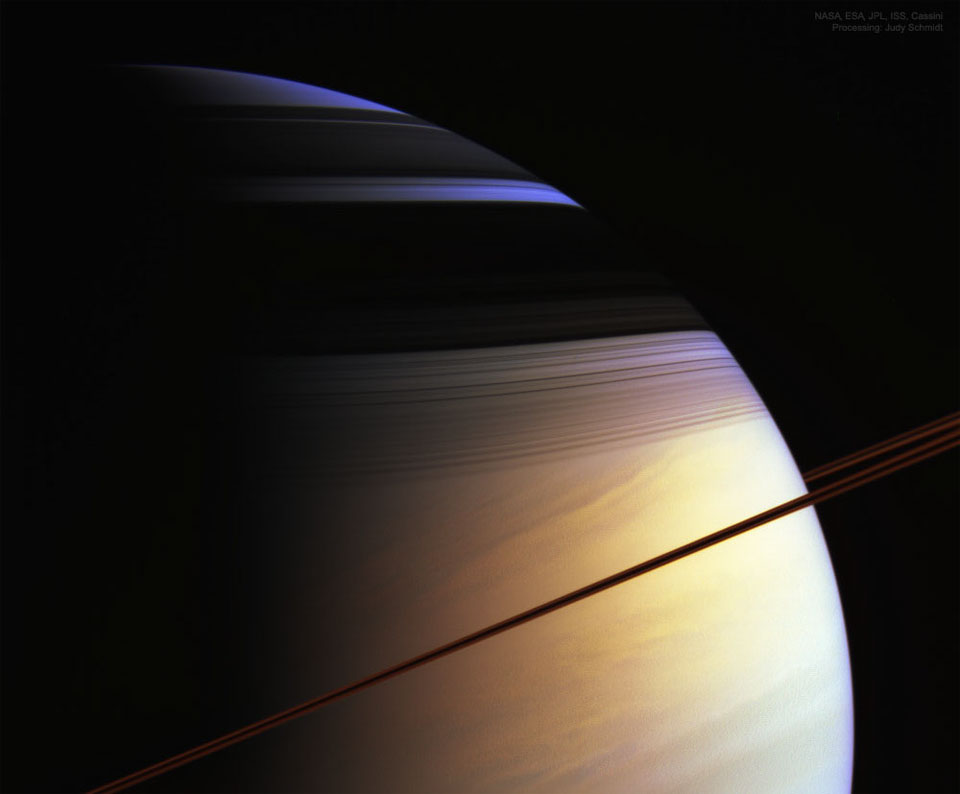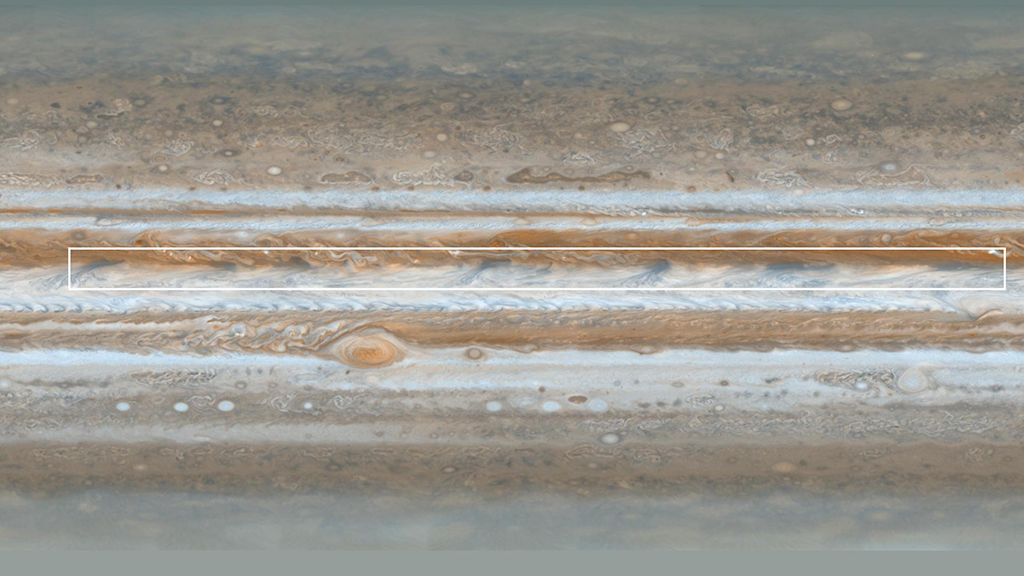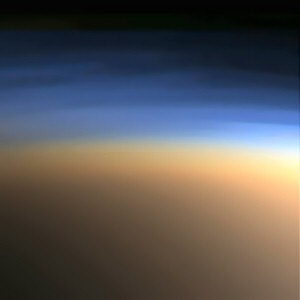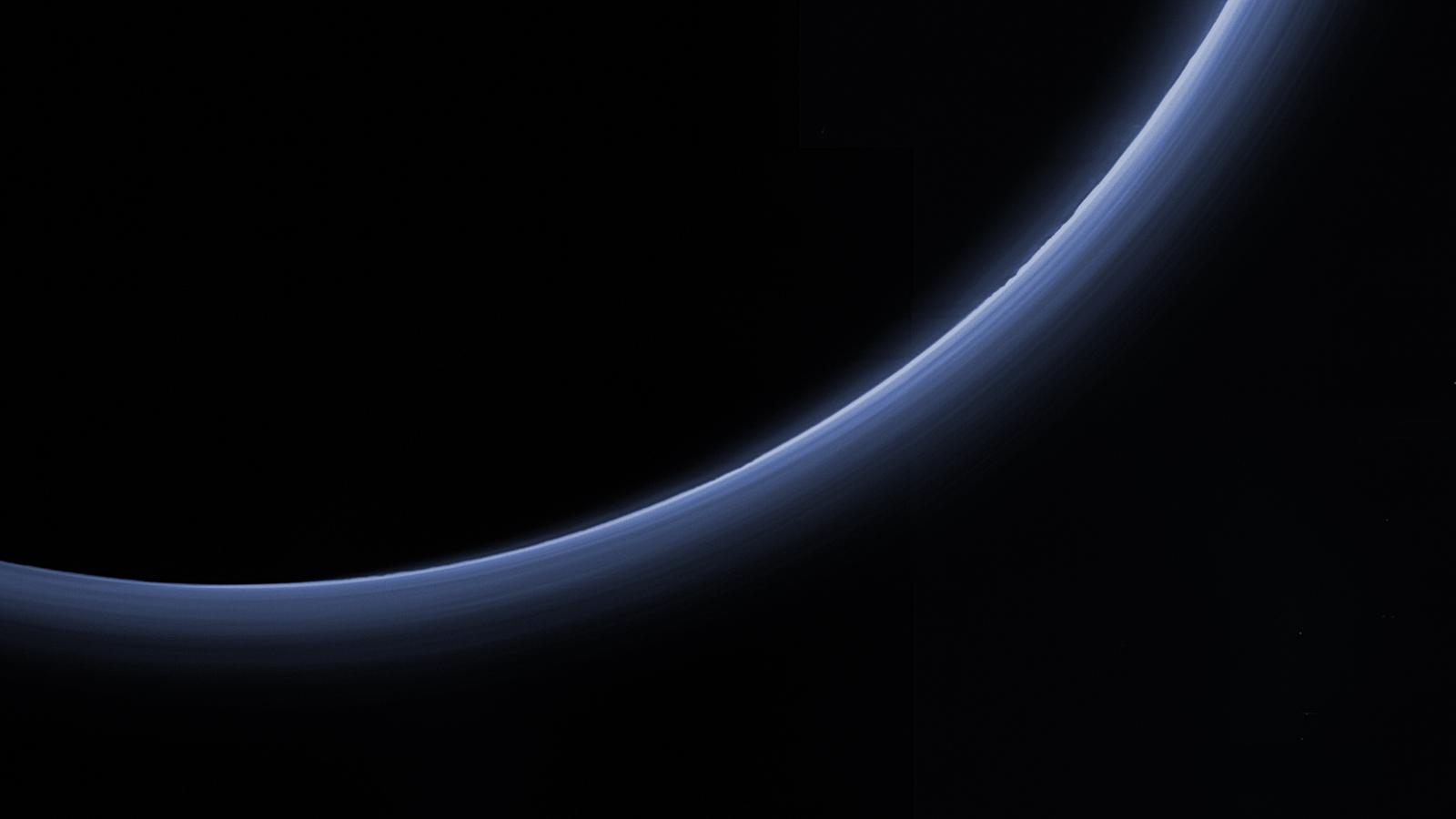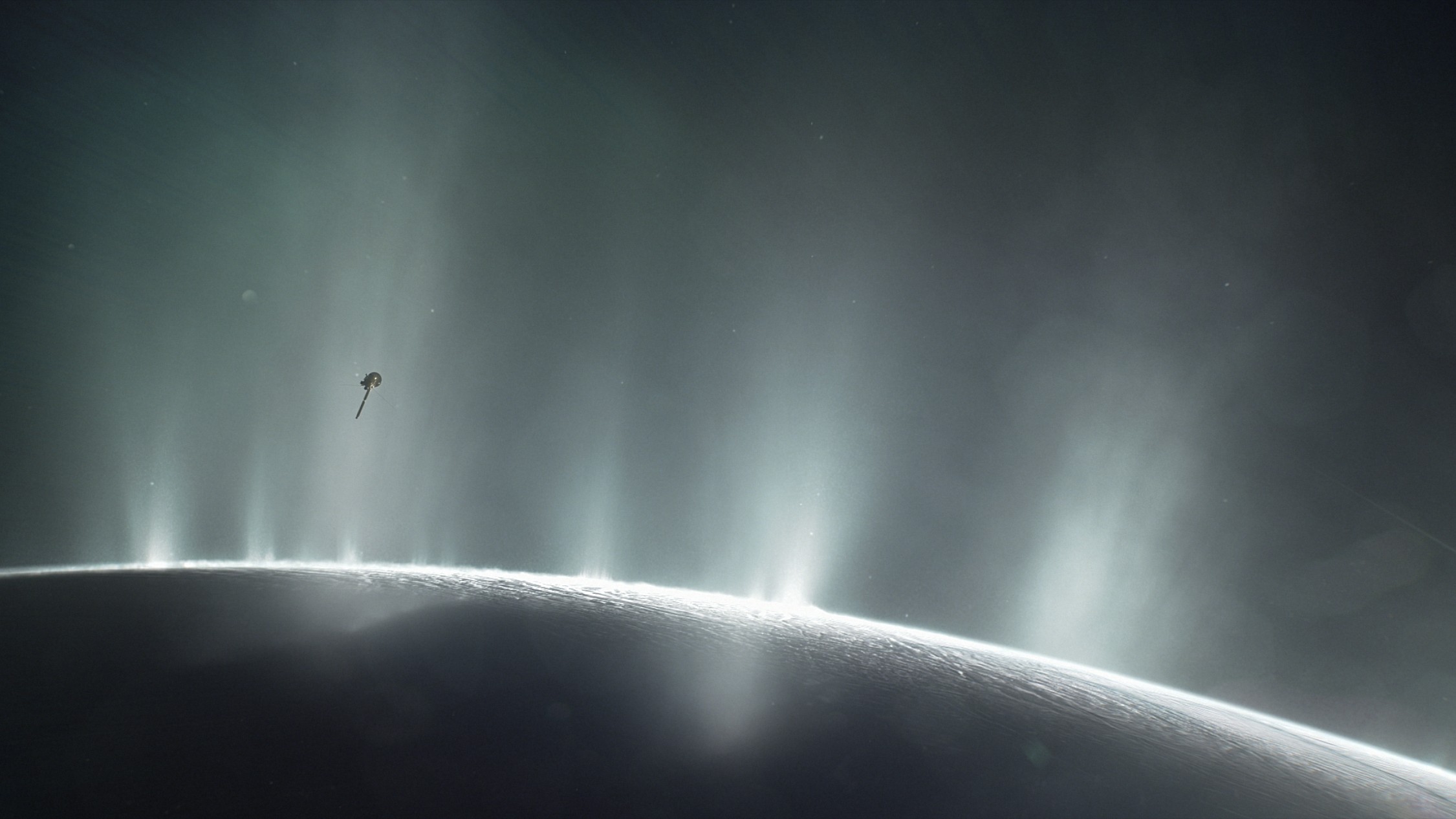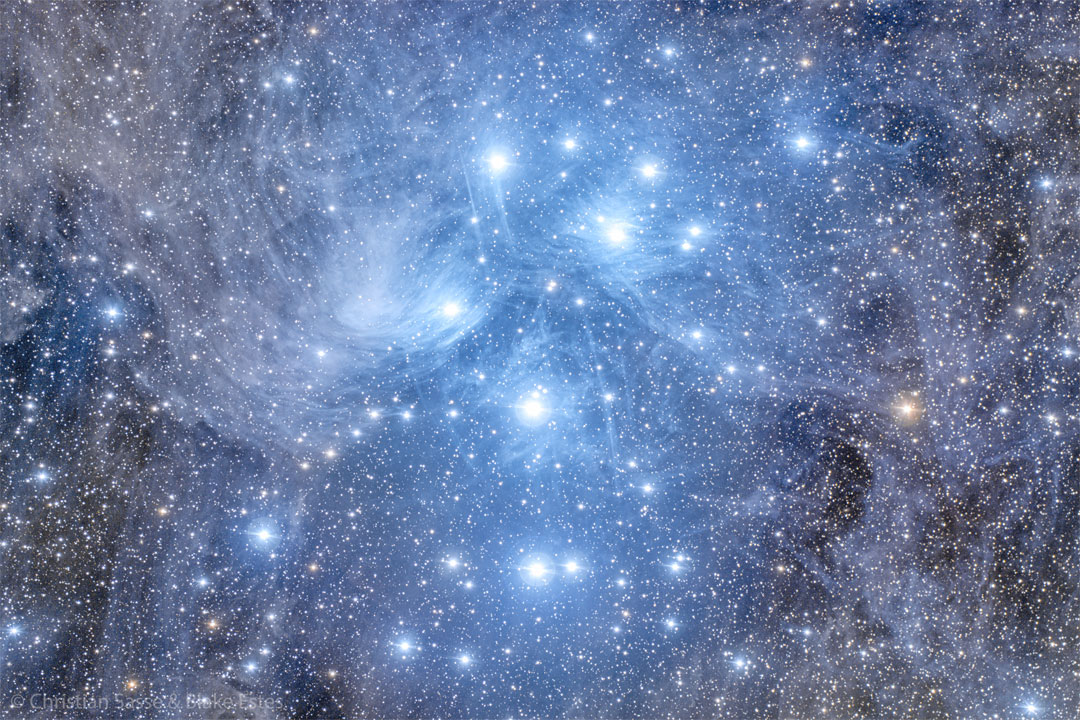Page 1 of 1
APOD: The Colors of Saturn from Cassini (2024 Jun 23)
Posted: Sun Jun 23, 2024 4:05 am
by APOD Robot
 The Colors of Saturn from Cassini
Explanation:
The Colors of Saturn from Cassini
Explanation: What creates Saturn's colors? The
featured picture of Saturn only slightly exaggerates what a
human would see if hovering close to the giant ringed world. The image was taken in 2005 by the robot
Cassini spacecraft that orbited
Saturn from 2004 to 2017. Here
Saturn's majestic rings appear directly only as a curved line, appearing brown, in part from its
infrared glow. The rings best show their complex structure in the
dark shadows they create across the upper part of the planet. The northern hemisphere of
Saturn can appear partly blue for the same reason that
Earth's skies can appear blue -- molecules in the cloudless portions of both planet's atmospheres are better at scattering blue light than red. When looking deep into
Saturn's clouds, however, the natural gold hue of Saturn's clouds becomes dominant. It is
not known why
southern Saturn does not show the same blue hue -- one hypothesis holds that clouds are higher there. It is also
not known why some of Saturn's
clouds are colored gold.
Re: APOD: The Colors of Saturn from Cassini (2024 Jun 23)
Posted: Sun Jun 23, 2024 5:27 am
by VictorBorun
in a strange way Saturn's violet-blue atmosphere over amber-yellow clouds mimics albino human's cyan skin over red erythrocytes.
Both situations are an interplay of a pair of complementary colours, creating white or gray where the opponents strike a balance.
Saturn's atmosphere ███ clouds
albino human's skin ███ erythrocytes
Re: APOD: The Colors of Saturn from Cassini (2024 Jun 23)
Posted: Sun Jun 23, 2024 5:59 am
by Ann
Unsurprisingly, I remember this picture from 2005 very well!

So why is the northern hemisphere of Saturn partly blue, at least when seen from certain angles? For the same reason that the cloudless daytime skies of Earth are blue, because of the way sunlight is scattered in the Earth's atmosphere and in Saturn's northern hemisphere atmosphere. So why is the southern hemisphere of Saturn apparently never blue? It's unknown, but it could be that the clouds are higher there. And as we all know, a cloudy sky is not blue.
But not only Saturn is partly blue. Jupiter is, too.
Poster of Jupiter in exaggerated color with two blue hot spots.
The hot spots of Jupiter are breaks in the cloud cover. They are not brightly blue, but they are bluer than the clouds surrounding them. Read about them
here.
Saturn's large orange moon Titan has a layer of blue haze on top of its orange haze (or cloud cover):
Pluto has a thin hazy atmosphere which is blue:
But the bluest feature in the Solar system is Saturn's E ring, which is created when sunlight is scattered in the fine particles from the icy geysers of Saturn's moon Enceladus:
The icy jets from Enceladus then form the E ring of Saturn:
All these features (with the possible exception of Jupiter's hot spots) are blue because they contain small particles which scatter blue light more efficiently than red and yellow light. So in other words, all these features are blue because they scatter blue light from the Sun more efficiently than they scatter redder light from the Sun.
And that's also why the Pleiades nebulas are so very blue. Of course, these nebulas are even bluer than the E ring, because the Seven Sisters of the Pleiades are intrinsically so much bluer than the Sun, thus providing so much more blue light to scatter.
Ann
Re: APOD: The Colors of Saturn from Cassini (2024 Jun 23)
Posted: Sun Jun 23, 2024 12:34 pm
by florid_snow
Beautiful! So we only get to see Titan's shadow on Saturn about once every 15 years, right? I was looking up in Stellarium and it looks like there will be several visible passes around this time next year.
Re: APOD: The Colors of Saturn from Cassini (2024 Jun 23)
Posted: Sun Jun 23, 2024 5:34 pm
by AVAO
Actually, we're talking about art here. A worthy evergreen. Congratulations to Judy once again!
Re: APOD: The Colors of Saturn from Cassini (2024 Jun 23)
Posted: Sun Jun 23, 2024 5:40 pm
by johnnydeep
AVAO wrote: ↑Sun Jun 23, 2024 5:34 pm
Actually, we're talking about art here. A worthy evergreen. Congratulations to Judy once again!
Meaning what? Is this a complement or a criticism? Is this APOD more interpretive "art" than "real" photo (for some more scientifically valid definition of real)?
 The Colors of Saturn from Cassini
The Colors of Saturn from Cassini